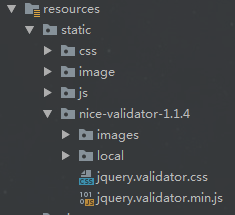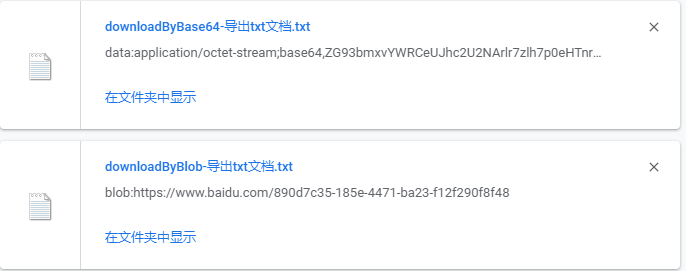1、string对象中可以传正则的函数介绍
var matches = text.match(pattern);
alert(matches.index); //0
alert(matches[0]); //"cat"
alert(pattern.lastIndex); //0
/
定义和用法
search() 方法用于检索字符串中指定的子字符串,或检索与正则表达式相匹配的子字符串。
stringObject.search(regexp)
regexp
该参数可以是需要在 stringObject 中检索的子串,也可以是需要检索的 RegExp 对象。
注释:要执行忽略大小写的检索,请追加标志 i。
返回值
stringObject 中第一个与 regexp 相匹配的子串的起始位置。
注释:如果没有找到任何匹配的子串,则返回 -1。
/
var pos = text.search(/at/);
alert(pos); //1
/
定义和用法
replace() 方法用于在字符串中用一些字符替换另一些字符,或替换一个与正则表达式匹配的子串。
stringObject.replace(regexp/substr,replacement)
regexp/substr
必需。规定子字符串或要替换的模式的 RegExp 对象。
请注意,如果该值是一个字符串,则将它作为要检索的直接量文本模式,而不是首先被转换为 RegExp 对象。
replacement 必需。一个字符串值。规定了替换文本或生成替换文本的函数。
返回值
一个新的字符串,是用 replacement 替换了 regexp 的第一次匹配或所有匹配之后得到的。
/
var result = text.replace("at","ond");
alert(result); //"cond,fat"
result = text.replace(/at/g,bond,sond,fond"
result = text.replace(/(.at)/g,"word ($1)");
alert(result); //word (cat),word (bat),word (sat),word (fat)
function htmlEscape(text){
return text.replace(/[<>"&]/g,function(match,pos,originalText){
switch(match){
case "<":
return "<";
case ">":
return ">";
case "&":
return "&";
case "\"":
return """;
}
});
}
alert(htmlEscape("<p class=\"greeting\">Hello World!
")); ///
定义和用法
split() 方法用于把一个字符串分割成字符串数组。
stringObject.split(separator,howmany)
separator 必需。字符串或正则表达式,从该参数指定的地方分割 stringObject。
howmany 可选。该参数可指定返回的数组的最大长度。如果设置了该参数,返回的子串不会多于这个参数指定的数组。如果没有设置该参数,整个字符串都会被分割,不考虑它的长度。
返回值
一个字符串数组。该数组是通过在 separator 指定的边界处将字符串 stringObject 分割成子串创建的。返回的数组中的字串不包括 separator 自身。
但是,如果 separator 是包含子表达式的正则表达式,那么返回的数组中包括与这些子表达式匹配的字串(但不包括与整个正则表达式匹配的文本)。
/
var colorText = "red,blue,green,yellow";
var colors1 = colorText.split(","); //["red","blue","green","yellow"]
var colors2 = colorText.split(",",2); //["red","blue"]
var colors3 = colorText.split(/[^\,]+/); //["",""]
2、字符串转成小写和大写函数
3、字符串对象 new String()
alert(typeof stringObject); //"object"
alert(typeof stringValue); //"string"
alert(stringObject instanceof String); //true
alert(stringValue instanceof String); //false
4、字符串fromCharCode()方法
5、字符串本地比较方法localeCompare()
//preferred technique for using localeCompare()
function determineOrder(value) {
var result = stringValue.localeCompare(value);
if (result < 0){
alert("The string 'yellow' comes before the string '" + value + "'.");
} else if (result > 0) {
alert("The string 'yellow' comes after the string '" + value + "'.");
} else {
alert("The string 'yellow' is equal to the string '" + value + "'.");
}
}
determineOrder("brick");
determineOrder("yellow");
determineOrder("zoo");
6、indexOf() 和 lastIndexOf()方法
定义和用法
lastIndexOf() 方法可返回一个指定的字符串值最后出现的位置,在一个字符串中的指定位置从后向前搜索。
stringObject.lastIndexOf(searchvalue,fromindex)
searchvalue 必需。规定需检索的字符串值。
fromindex 可选的整数参数。规定在字符串中开始检索的位置。
它的合法取值是 0 到 stringObject.length - 1。如省略该参数,则将从字符串的最后一个字符处开始检索。
*/
var stringValue = "hello world";
alert(stringValue.indexOf("o")); //4
alert(stringValue.lastIndexOf("o")); //7
alert(stringValue.indexOf("o",6)); //7
alert(stringValue.lastIndexOf("o",6)); //4
7、字符串常用字符截取方法
定义和用法
substring() 方法用于提取字符串中介于两个指定下标之间的字符。
语法
stringObject.substring(start,stop)
start 必需。一个非负的整数,规定要提取的子串的第一个字符在 stringObject 中的位置。
stop 可选。一个非负的整数,比要提取的子串的最后一个字符在 stringObject 中的位置多 1。如果省略该参数,那么返回的子串会一直到字符串的结尾。
返回值
一个新的字符串,该字符串值包含 stringObject 的一个子字符串,其内容是从 start 处到 stop-1 处的所有字符,其长度为 stop 减 start。
说明
substring() 方法返回的子串包括 start 处的字符,但不包括 stop 处的字符。
如果参数 start 与 stop 相等,那么该方法返回的就是一个空串(即长度为 0 的字符串)。
如果 start 比 stop 大,那么该方法在提取子串之前会先交换这两个参数。
定义和用法
substr() 方法可在字符串中抽取从 start 下标开始的指定数目的字符。
语法
stringObject.substr(start,length)
start 必需。要抽取的子串的起始下标。必须是数值。如果是负数,那么该参数声明从字符串的尾部开始算起的位置。
也就是说,-1 指字符串中最后一个字符,-2 指倒数第二个字符,以此类推。
length 可选。子串中的字符数。必须是数值。如果省略了该参数,那么返回从 stringObject 的开始位置到结尾的字串。
返回值
一个新的字符串,包含从 stringObject 的 start(包括 start 所指的字符) 处开始的 length 个字符。
如果没有指定 length,那么返回的字符串包含从 start 到 stringObject 的结尾的字符。
*/
var stringValue = "hello world";
alert(stringValue.slice(3)); //"lo world"
alert(stringValue.substring(3)); //"lo world"
alert(stringValue.substr(3)); //"lo world"
alert(stringValue.slice(3,7)); //"lo w"
alert(stringValue.substring(3,7)); //"lo w"
alert(stringValue.substr(3,7)); //"lo worl"
alert(stringValue.slice(-3)); //"rld"
alert(stringValue.substring(-3)); //"hello world"
alert(stringValue.substr(-3)); //"rld"
alert(stringValue.slice(3,-4)); //"lo w"
alert(stringValue.substring(3,-4)); //"hel"
alert(stringValue.substr(3,-4)); //"" (empty string)
以上就是今天的javascript学习小结,之后每天还会继续更新,希望大家继续关注。






